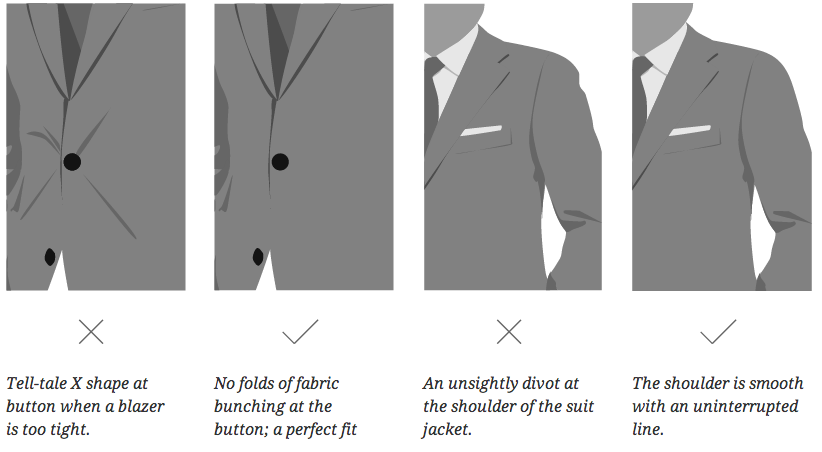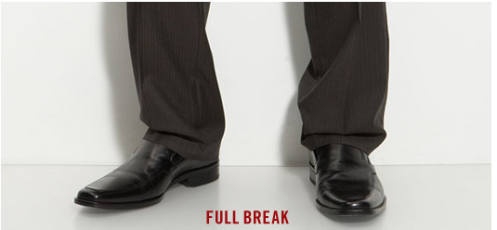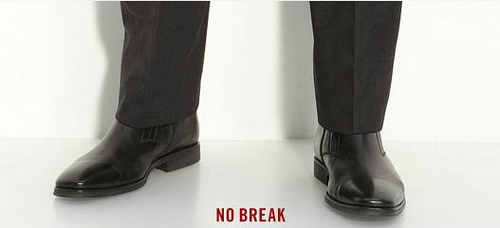Men's Alterations and Tailoring 101
Everything You Need to Know About Men’s Alternations, Suit Tailoring, Pant breaks, and how it all fits.
As the saying goes, behind every well-dressed man is a skilled tailor. We may be a little off on the quote but the words ring true; when shopping for clothes the most important thing is fit!
Having a skilled tailor in your contact list and being able to ask the right questions can take you from zero to hero, and since most of us shop off the rack, knowing your body type is the first step to mastering your personal style.
We currently have a made to measure trunk show happening! Check it out here.
First, find the brand that fits you best.
At Gotstyle, we carry a range of different brands with their own fits. Don’t be afraid of asking our stylists which brands would fit your body type best. Some are great for bigger guys with short arms or slim guys with long arms and everything in between.
The world of sewing and tailoring is understandably a bit overwhelming for some. We’ve outlined the areas of your suit jackets, blazers, pants, and dress shirts that you should and shouldn’t alter. Some alterations just aren’t worth the price!
Tailoring Suit Jackets & Blazers

The first thing you should focus on when it comes to the fit of a blazer or suit jacket is the shoulder. It is one of the most difficult and costly alterations so we recommend that you avoid it.
How it should fit: The shoulder of the jacket should end where your shoulders naturally end.
What you can alter: Sleeve length, Jacket waist, Jacket length, Button placement
The Suit & Jacket Sleeves
The skinny on sleeves is this, ideally, you should allow 1/4″ to 1/2″ of your shirt cuff to show when you put your hands by your side. If your blazer features working buttons at the cuff talk to your tailor about having the sleeves shortened from the shoulder. You'll end up with the desired length without losing the function.
There are times when blazer sleeves need to be lengthened; how much longer depends on the make and brand of the blazer. There also times when this can’t be done so make sure you check with the stylist.
The Suit & Jacket body
When looking at the body of a blazer it should outline your natural shape but remember, it is not a t-shirt and should not be skin-tight. A formal jacket should narrow slightly at the waist creating that desired shape whereas a casual jacket can remain slightly less fitted.

Look for a suit or jacket with a “modern fit” which is a big step away from the old-fashioned boxy looking fit. If the fit is right in the shoulders but not the waist OR you have an older jacket that you want to modernize. You can ask your tailor to cinch the jacket’s waist. It should be fitted, not tight. If you notice any pulling around the button, it's too tight.

The Suit & Jacket Length
How it should fit: It should just cover your seat and not any longer.
The length of your blazer is another area that can be tricky to alter. Manufacturers don't leave extra fabric for lengthening so if you feel like the body is a little short, opt for a tall.
Blazers can be shortened so long that it doesn't through off the balance of the body of the jacket and maintains a good distance from the end of the pocket to the end of the jacket.
It can be a bit pricey but sometimes worth it if you’re short, or if you’re updating an older jacket.
Tailoring Suit & Dress Pants
The first thing you should focus on when it comes to the fit of your dress or suit pants is that you can sit and the hem is right for the shoe you’ll be wearing.
How it should fit: How your pants fit is entirely up to you. Although we don’t recommend doing more than 1 break in the pant leg.
What you can alter: Pant length, Pant Waist, Seat, Tapering of the leg, Button placement
The Suit & Pant Length (Breaks)
A break is how many times the pant leg “breaks” or creases before your foot.
Normally, suit pants are unfinished and run about 38†long – too long for anyone to wear. You must have these hemmed.

The best hem length for everyday wear is getting a half-break or slight break.

The bottom of the pants should hit about 1/2 to 2/3 of the way down the shoe, allowing a slight fold where the cuff hits the shoe.

A trouser with no break is usually referred to as a "flood". The pant neatly ends at the top of the shoe. Perfect for showing off those fancy socks!
The Waist and Seat
This is an area where you have a little wiggle room. Manufacturers will often leave a seam allowance in both the waist and seat so that you can have them let out for more room. Having them taken in is no issue as well.
Just make sure that they are sitting on your waist and not low riding...these are not jeans guys, don't wear them the same way.
Extras:
If you wear through the crotch of your pants quickly, have a crotch guard added to decrease friction and lengthen the life of your pants.
Muscular thighs showing pocketing lines? Have the pockets cut in half or removed completely for a seamless pant leg. And if your pants are billowing in the wind consider having them tapered.
This is a purely cosmetic alteration but can streamline the look of your suit. Just remember DO NOT go too skinny. Not only will you have trouble getting your foot through but leggings are never a good look on guys.
You can even update older pairs by asking your tailor to add a cuff to your trousers.

Tailoring Dress Shirts

The first thing you should focus on when it comes to the fit of your dress shirts is that it fits well in the chest and shoulders as well as the neck.
How it should fit: Your dress shirt sleeves should be hitting where your wrist natural breaks and hang ¼ – ½ inch out of your blazer or suit jacket.
What you can alter: Sleeve length, Shirt Body.
The Dress Shirt Body
If a shirt feels full through the midsection, don't worry; it can be darted to create a modern silhouette. This will ensure you can buy the correct neck size without having extra fabric hanging around.
Darting can also be done on your casual shirts (oxfords and button downs).
The Dress Shirt Sleeves
Shortening the sleeve on a shirt is a very simple alteration to speak to your tailor about. It won’t cost much and can clean up your look instantly.
While you can’t lengthen shirt sleeves you can look for shirts with longer cut sleeves like our Gotstyle dress shirts.
If the sleeves are feeling full or bulky on an older shirt talk to your tailor about tapering the sleeve it may cost you but, you'll certainly avoid looking like Jerry Seinfeld's puffy shirt!

When it comes down to it, talk with your tailor. Ask questions and understand that certain alterations or adjustments just cannot be done. Suiting should be structured and streamlined but not skinny. Take advantage of modifications that lengthen the life of your suit and don't forget, you can always call us when you have any questions!
Follow us on Instagram for more style tips, and sign up for our weekly style newsletter!
We currently have a made to measure trunk show happening! Check it out here.
The post Men’s Alterations and Tailoring 101 appeared first on GOTSTYLE.


